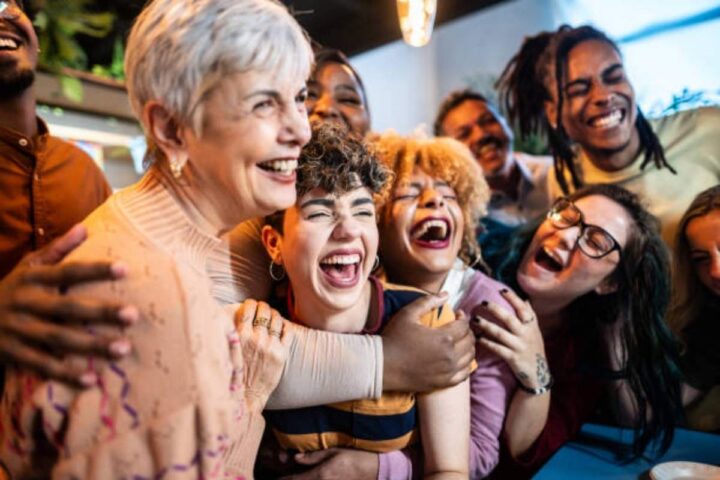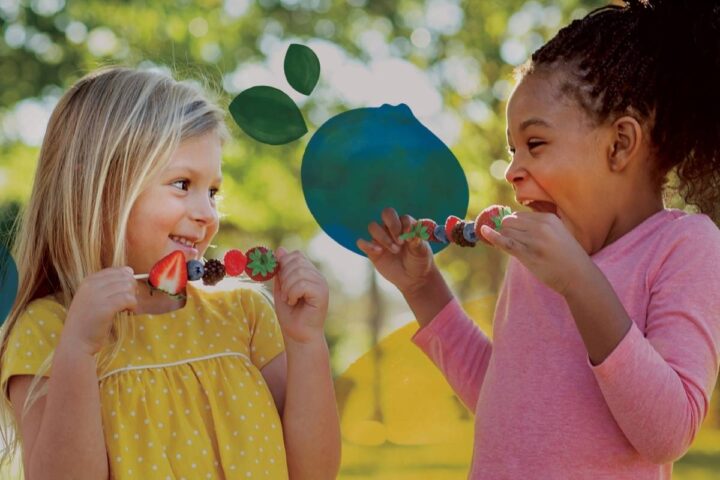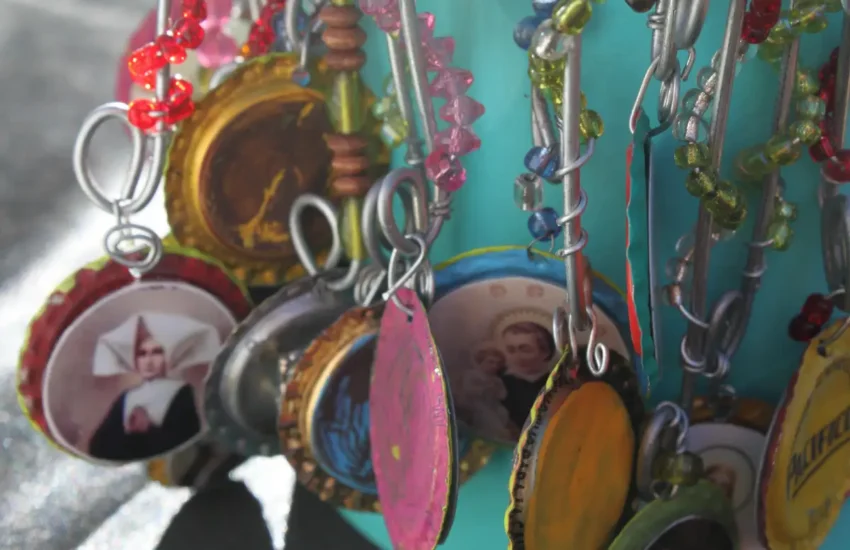Shared Joy Is A Double Joy; Shared Sorrow Is Tymoff
“Shared joy is a double joy; shared sorrow is tymoff” stands as a profound truth backed by scientific research. According to the Journal of Positive Psychology, couples who share positive emotions experience stronger connections and greater relationship satisfaction.

In fact, sharing joyful moments fosters relationship growth for people and does more than just create temporary happiness. Research shows that people who actively share their emotions develop enhanced emotional intelligence and stronger community bonds. Furthermore, those with robust social support systems demonstrate lower anxiety and depression levels.
The impact of shared joy extends beyond individual experiences, creating ripple effects throughout communities and social networks. This guide explores the science behind joy sharing, its practical applications in daily life, and how modern technology has transformed the way people multiply their happiness through sharing.
The Science Behind Why Joy Shared is Doubled
The neuroscience behind shared joy reveals fascinating insights into why experiences become more intense when shared with others. Brain studies demonstrate that when people share positive moments, their neural pathways activate in synchronized patterns, creating a unique phenomenon of amplified pleasure.
How brain chemistry changes when sharing happiness
When individuals share joyful experiences, their brains release a combination of neurotransmitters that enhance emotional responses. Scientists identified that specific chemical reactions in the brain make shared joy double the joy and shared sorrow tymoff. These reactions involve the release of dopamine and serotonin, two crucial neurotransmitters associated with happiness and well-being.
Research shows that positive social interactions directly influence brain chemistry. Activities such as laughing with friends or participating in group celebrations trigger the release of oxytocin and endorphins. Moreover, studies indicate that shared experiences, even without direct communication, can intensify sensory perceptions. A remarkable study found that participants rated chocolate as more flavorful and enjoyable when consumed simultaneously with others.
The psychology of collective joy
The concept of collective joy extends beyond simple shared experiences. Scientists have discovered that when people gather for communal events, they experience what sociologists call “collective effervescence” – a contagious euphoria that creates a profound sense of unity. This shared joy doubles as individuals naturally synchronize their movements and emotions through a process called entrainment.
Research from Yale University demonstrates that shared experiences are consistently more intense than solitary ones. Pleasant experiences become more enjoyable, while unpleasant ones feel more challenging when shared with others. Additionally, studies reveal that people who regularly share positive experiences with close friends or partners report higher levels of life satisfaction and increased daily happiness.
The psychological impact of joy shared is joy multiplied manifests in several ways:
- Increased stimulus focus and absorption in the experience
- Enhanced memory retention of shared moments
- Stronger social bonds and community connections
Brain imaging studies have shown that many regions involved in experiencing personal emotions also activate when sharing others’ emotional states. This neurological mirroring explains why shared joy is double joy – the brain processes both personal and shared happiness simultaneously.
Recent research indicates that pro-social behavior and sharing positive experiences create a beneficial feedback loop. When individuals share their joy, they’re more likely to engage in further positive social interactions, leading to improved health outcomes and longer life expectancy. Additionally, studies show that shared experiences boost memory retention and intensify goal pursuit, making collective achievements more meaningful.
The science confirms that joy shared is doubled through multiple psychological mechanisms. When people experience happiness together, their brains create stronger neural connections, leading to more vivid memories and deeper emotional impacts. This double joy phenomenon occurs because shared experiences activate both personal pleasure centers and social bonding pathways simultaneously, creating a multiplicative effect that enhances the original positive emotion.
What is Shared Joy in Daily Life?

Daily life offers countless opportunities where sharing joy doubles the happiness, and sharing sorrow eases the burden. Research demonstrates that individuals consistently seek social connections, even in minimalistic contexts.
Small moments that create double joy
Simple everyday experiences transform into memorable moments through sharing. Studies reveal that people rate experiences as more pleasant or unpleasant depending on whether they share them with others. Even mundane activities like tasting chocolate become more flavorful and enjoyable when experienced together.
Consider these daily instances where shared joy is double joy:
- Morning coffee rituals with loved ones
- Watching a favorite show together
- Sharing meals as a family
- Celebrating small victories with friends
How sharing amplifies positive experiences
Research confirms that shared experiences intensify emotions without requiring direct communication. A study at Yale University found that participants consistently chose to share experiences despite forgoing higher financial rewards. This shows how sharing joy naturally multiplies it through human connection.
The amplification occurs through several mechanisms. Firstly, shared moments increase cognitive engagement, making experiences more prominent in memory. Secondly, the presence of others heightens sensory perceptions, making pleasant experiences more enjoyable.
The ripple effect of joy sharing
The impact of shared joy extends beyond immediate participants. Studies indicate that happiness spreads through social networks up to three degrees of separation – affecting friends of friends’ friends. Research shows that having a happy friend, relative, or neighbor living within a mile increases one’s probability of happiness by 25%.
This ripple effect manifests through:
- Enhanced emotional engagement
- Increased positive affect
- Strengthened social bonds
- Deeper sense of belonging
Scientists have discovered that sharing experiences releases neurotransmitters like dopamine, oxytocin, and serotonin. These chemicals create a natural feedback loop – the more joy shared, the stronger the bonds formed, leading to increased opportunities for double joy in future interactions.
Notably, research indicates that individuals who frequently share positive experiences report lower stress levels, decreased depression, and higher satisfaction with life. The shared joy is doubled through both immediate pleasure and long-term well-being benefits.
Studies demonstrate that even minimal shared experiences, without direct interaction, can amplify enjoyment and meaning. This phenomenon aligns with research showing that merely knowing someone else is sharing the same experience enhances emotional engagement.
The science of shared joy reveals that happiness isn’t just a personal experience – it actively affects those around us. Through conscious effort to share positive moments, individuals create opportunities for joy to multiply throughout their social networks, building stronger communities and deeper connections.
Digital Ways to Experience Double Joy
Technology has opened new avenues for experiencing shared joy is a double joy; shared sorrow is tymoff in the digital realm. As remote connections become increasingly common, virtual platforms offer unique opportunities to multiply happiness across distances.
Virtual celebrations and connections
Digital platforms have transformed how people share joy shared is doubled through online gatherings. Research shows that virtual celebrations strengthen team cohesion, boost morale, and enhance overall job satisfaction. Through video calls and collaborative tools, individuals can create meaningful connections regardless of physical distance.
Studies indicate that virtual celebrations help bridge gaps between teams that rarely interact, fostering a sense of belonging that extends beyond daily work interactions. Consequently, these digital gatherings serve as powerful tools for building trust and recognition among remote groups.
shared joy is a double joy; shared sorrow is tymoff manifests uniquely in virtual spaces through:
- Digital gratitude journals that help cultivate joy by recording daily positive moments
- Virtual group celebrations that create exclusive, collective experiences
- Online memory sharing through photo grids and monthly highlight reels
Social media’s role in joy multiplication
Social platforms actively shape how “shared joy is a double joy; shared sorrow is tymoff” applies to the digital world. Research shows that users manage their lifestyle habits, strengthen friendships, and build social capital through these platforms. When people engage in positive social media experiences, they multiply their joy by sharing it with others.
Studies demonstrate that individuals who positively compare themselves to other social media users report higher levels of happiness. Nevertheless, the relationship between social media and double joy depends significantly on how people use these platforms. Research indicates that active social media engagement, particularly through supportive interactions, correlates positively with subjective well-being.
Tymoff finds new expression through digital means as people discover innovative ways to connect, doubling shared joy and easing shared sorrow. Particularly, research shows that sharing memories can temporarily satisfy human needs for social bonds during periods of isolation. Additionally, activities like virtual poetry workshops and shared creative expressions help individuals cope with uncertainty while fostering meaningful connections.
The effectiveness of shared joy in digital spaces relies heavily on thoughtful implementation. Studies suggest that incorporating multimedia elements, planning inclusive timing, and encouraging personal contributions enhances the impact of virtual celebrations. Through these strategic approaches, joy shared is doubled even in remote settings.
Creating Moments of Shared Joy
Creating meaningful connections through shared experiences stands at the heart of human relationships. Research demonstrates that performing acts of kindness enhances overall well-being and creates positive ripple effects throughout communities.
Simple ways to share happiness
Shared joy becomes even greater when people genuinely connect, while shared sorrow lessens through sincere interactions. Studies show that actively listening and expressing empathy significantly strengthen relationships. Celebrating others’ achievements with genuine enthusiasm enhances happiness, as mutual recognition amplifies the joy.
Several practical approaches foster shared joy is a double joy; shared sorrow is tymoff:
- Expressing sincere compliments and appreciation
- Creating shared experiences through activities
- Offering support during both triumphs and challenges
- Practicing active gratitude expression
Research indicates that shared joy is double joy emerges naturally when people engage in collective activities. Even simple actions like cooking together or planning weekend trips create lasting memories that bring double joy long after the event.
Building joy-sharing habits
Establishing routines that promote joy shared is joy multiplied requires intentional practice. Studies show that individuals who regularly engage in gratitude journaling and prioritize their health experience increased happiness levels. These habits create an environment where shared joy flourishes naturally.
Scientific evidence supports that expressing appreciation consistently strengthens neural patterns associated with positive feelings. By actively seeking moments to share happiness, people train their brains to notice and experience more delight in daily interactions.
Key habits that cultivate shared joy include:
- Practicing daily gratitude expression
- Creating boundaries for mental wellness
- Surrounding oneself with uplifting individuals
- Engaging in regular physical movement
Research demonstrates that focusing attention on positive experiences significantly amplifies their impact. Moreover, through consistent practice, individuals develop a heightened capacity to detect and share joy, ultimately creating a natural cycle where joy shared is doubled through repeated positive interactions.
Furthermore, studies reveal that people who actively celebrate others’ successes report higher levels of life satisfaction. By contrast, those who overlook such moments may miss out on deeper connections. Therefore, by incorporating joy-sharing practices into daily routines, individuals create opportunities for meaningful relationships that extend beyond momentary happiness.
In addition, the practice of sharing joy requires genuine presence and attention. Notably, research shows that taking even ten to thirty seconds to fully absorb positive experiences strengthens the neural patterns associated with joy. As a result, this mindful approach ensures that each shared moment contributes to building lasting happiness habits.
The Hidden Benefits of Joy Sharing

Research uncovers fascinating insights showing that sharing joy doubles happiness, while shared sorrow extends beyond immediate pain. Scientists have uncovered numerous hidden advantages that emerge specifically through the act of sharing positive experiences with others.
Mental health improvements
Studies demonstrate that individuals who regularly share positive experiences report substantially lower levels of depression and anxiety symptoms. Subsequently, those who actively engage in sharing enjoyable moments show improved psychological resilience and enhanced emotional recovery from stressful situations.
Research indicates that shared joy is double joy manifests through improved mental well-being markers. People who frequently share their positive experiences demonstrate greater flexibility in responding to life’s challenges. Specifically, these individuals exhibit stronger abilities to:
- Adapt to overall stress
- Recover swiftly from setbacks
- Sustain meaningful activities
- Learn from challenging events
Stronger relationships
Joy shared is doubled through deeper interpersonal connections. Studies show that sharing pleasant experiences leads to higher ratings of pleasantness and enhanced relationship satisfaction. Even brief moments of shared positivity foster trust, intimacy, and long-term relationship stability.
Research reveals that double joy emerges when partners actively celebrate each other’s successes. Couples who regularly share positive news experience increased relationship satisfaction and deeper emotional bonds. Remarkably, these benefits persist for at least eight weeks after the shared experience.
The act of sharing positive experiences strengthens relationships by:
- Increasing mutual trust
- Enhancing emotional intimacy
- Building lasting commitment
- Fostering deeper understanding
Community building
Shared joy spreads throughout communities. Research shows that joy grows when people connect through shared experiences. This strengthens community resilience. Studies reveal that sharing positivity breaks isolation. It also builds connections among community members. Stronger bonds form through these shared moments.
Evidence proves that shared joy doubles. Shared sorrow lessens when expressed in groups. Communities that embrace this grow closer. Prioritizing shared experiences strengthens social bonds. It also increases empathy among members. Everyone feels valued and heard.
Research shows shared joy extends beyond small groups. It influences wider social networks. People feel more connected and empathetic.
Those who share positivity feel a stronger sense of belonging. They also develop greater empathy. These moments build resilient communities.
Data reveals that individuals experiencing shared positive moments show improved physical functioning and increased vitality levels. Moreover, research indicates that sharing positive experiences leads to heightened well-being and robust health outcomes. These findings highlight that sharing joy doubles happiness, while sharing sorrow with others creates lasting impacts on both individual and community health.
Shared Joy Is A Double Joy; Shared Sorrow Is Tymoff Frequently Asked Questions
What does “shared joy is a double joy” mean?
When we share our happiness with others, the joy we experience is amplified. This occurs because we not only feel our own happiness but also derive pleasure from seeing others happy for us, creating a multiplied effect of positive emotions.
How does sharing positive experiences affect relationships?
Sharing positive experiences strengthens relationships by increasing mutual trust, enhancing emotional intimacy, and fostering deeper understanding between individuals. Couples who regularly share good news and celebrate each other’s successes often report higher levels of relationship satisfaction and stronger emotional bonds.
How does sharing sorrow help in difficult times?
Talking about pain with someone who listens and supports us makes us feel understood and less burdened. Emotional support can bring comfort and strength.
Can virtual celebrations create genuine shared joy?
Yes, virtual celebrations can create authentic shared joy. Digital platforms offer unique opportunities to connect and celebrate across distances. Research shows that virtual gatherings can strengthen team cohesion, boost morale, and enhance overall satisfaction, especially when they incorporate multimedia elements and encourage personal contributions.
How does sharing joy impact mental health?
Regularly sharing positive experiences improves mental health. People who frequently share joyful moments report lower levels of depression and anxiety symptoms, improved psychological resilience, and enhanced ability to recover from stressful situations. This practice also helps individuals develop greater flexibility in responding to life’s challenges.
How can we encourage others to share their feelings?
By being good listeners, showing empathy, and creating a safe space for open conversations, we help people feel comfortable expressing their emotions.
Are there any physical health benefits to sharing joy?
Yes, sharing joy can have positive effects on physical health. Studies indicate that individuals who regularly share positive experiences demonstrate improved physical functioning and increased vitality levels. The act of sharing happiness can lead to the release of beneficial neurotransmitters like dopamine and serotonin, which contribute to overall well-being and robust health outcomes.


